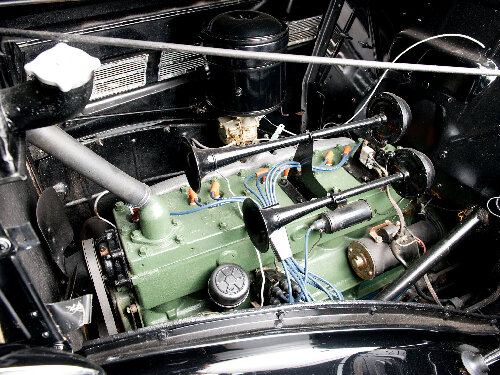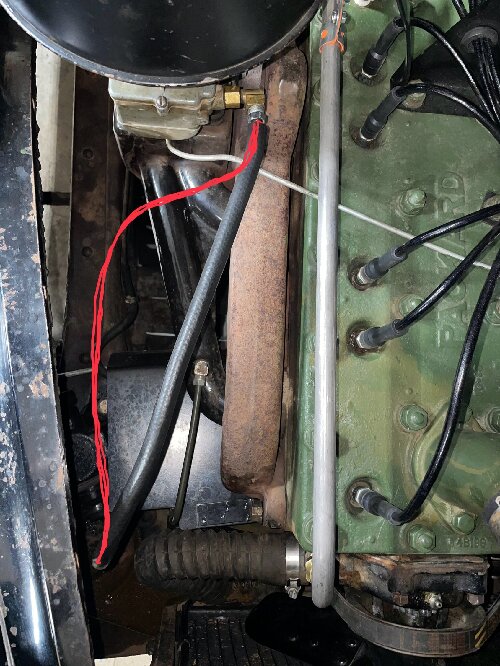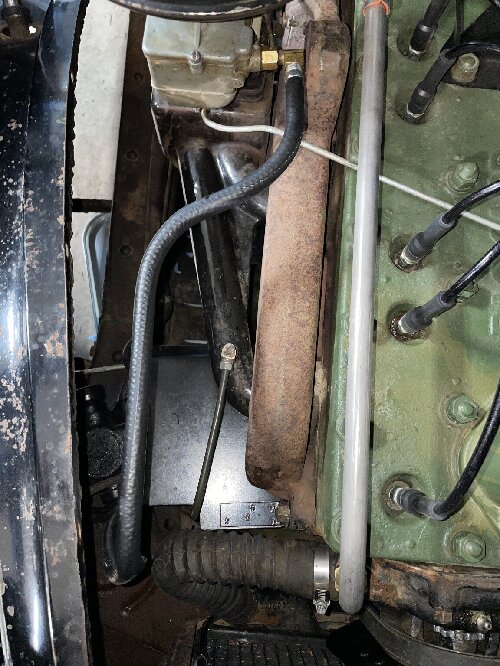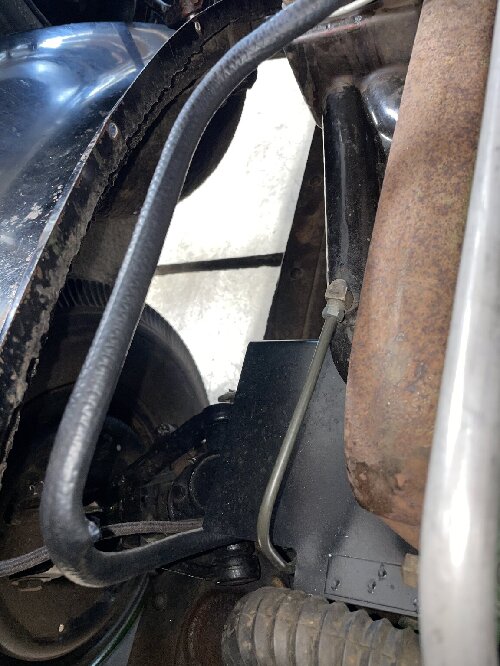|
Re: Don’s 1937 (120) 138CD Deluxe Touring Limo
|
||||
|---|---|---|---|---|
|
Home away from home
|
Quote:
It is the correct and original carburetor, Stromberg EE-14. I currently have a right angle fitting at the carburetor. It did not when I started. I don’t believe there were heat shields at the carburetor for ‘37
Posted on: 4/24 10:23
|
|||
|
||||
|
Re: Don’s 1937 (120) 138CD Deluxe Touring Limo
|
||||
|---|---|---|---|---|
|
Home away from home
|
Quote:
I believe this is what is happening to an extent. It is not boiling in the carburetor. I have been able to observe that directly and know that is not happening. It likely is in the fuel line between the pump and carburetor. However, it is not overflowing to the extent of flooding leading to hard starting. It starts great every time. Again, the carburetor is the correct carburetor and the inlet is where Packard designed it. I will likely try a new and longer line front he pump to the carburetor so that I can make a more sweeping route. I may also add a glass bowl fuel filter as Kev suggested.
Posted on: 4/24 10:29
|
|||
|
||||
|
Re: Don’s 1937 (120) 138CD Deluxe Touring Limo
|
||||
|---|---|---|---|---|
|
Home away from home
|
Thanks for all the thoughts/input. It gives me a couple items to try. I’ll let you know if the longer/more sweeping fuel line and adding a filter resolves the issue.
Posted on: 4/24 10:30
|
|||
|
||||
|
Re: Don’s 1937 (120) 138CD Deluxe Touring Limo
|
||||
|---|---|---|---|---|
|
Home away from home
|
I just came across this photo of another ‘37 120. It also has the Stromberg carburetor and you can see the inlet and 90 degree fitting is the same as what I have.
What is different is that the fuel line is routed to immediately turn away from the exhaust manifold. Mine, currently is not routed like that.  I’ll try re-routing like this… 
Posted on: 4/24 10:38
|
|||
|
||||
|
Re: Don’s 1937 (120) 138CD Deluxe Touring Limo
|
||||
|---|---|---|---|---|
|
Home away from home
|
Okay, like most of you, I’m convinced that the issue is fuel getting too hot in the fuel line between the fuel pump and carburetor after the car is shutoff. This is causing a rise in pressure, which then pushes fuel into the carburetor.
I rerouted my fuel line today and I don’t think I can route in further away form the manifold at this point. Unfortunately, this didn’t seem to help. I’m open to more ideas. Has anyone used something like this to provide additional insulation? https://www.cabletiesandmore.com/thermashield-t6-wrap?pid=4797&gad_source=1&gclid=CjwKCAjw26KxBhBDEiwAu6KXt-6-b96cJAPL4Q54RXDtsd3gjR3jKezK6buXfnZI65SIQ2VviHABCBoCEgkQAvD_BwE Here are a couple of pictures of the new routing.  
Posted on: 4/24 19:54
|
|||
|
||||
|
Re: Don’s 1937 (120) 138CD Deluxe Touring Limo
|
||||
|---|---|---|---|---|
|
Home away from home
|
The 120s originally had a heavy fabric material covering the fuel line between the pump and the carburetor. The rubber fuel line is probably about as effective, but it can absorb a lot of heat. Wrapping it in a reflective material might be helpful. The aftermarket plastic wire loom cover material might be a better choice. It's available in several IDs and is split lengthwise to allow installation. Using a size larger than the fuel line, like 3/4", might allow some air circulation inside it, and wrapping it in a reflective material would add additional protection. The exhaust manifold can radiate a lot of heat for at least several minutes after the engine is shut off, and that heat adds to the already high heat under the hood. Pontiac 8s around 1940-1953 were configured very much like the Packard 120, and Pontiac used a sheet metal heat shield under the carburetor base to deflect manifold heat away from the carburetor. This was in addition to the thick fiber insulator between the intake and the carburetor base. I don't know if Packard ever used such a thing, but one could be fabricated from sheet steel or aluminum. As I recall, the shields were about 4" X 7" and shaped to clear throttle linkage, etc and deflect radiant manifold heat away from the carburetor.
Posted on: 4/24 20:44
|
|||
|
||||
|
Re: Don’s 1937 (120) 138CD Deluxe Touring Limo
|
||||
|---|---|---|---|---|
|
Webmaster
|
I'd use something like this and make sure you cover the carb fittings as well.
https://amzn.to/3Qi6IBm
Posted on: 4/24 21:03
|
|||
|
-BigKev
1954 Packard Clipper Deluxe Touring Sedan -> Registry | Project Blog 1937 Packard 115-C Convertible Coupe -> Registry | Project Blog |
||||
|
||||
|
Re: Don’s 1937 (120) 138CD Deluxe Touring Limo
|
||||
|---|---|---|---|---|
|
Home away from home
|
Excellent suggestion!
Posted on: 4/24 21:16
|
|||
|
||||
|
Re: Don’s 1937 (120) 138CD Deluxe Touring Limo
|
||||
|---|---|---|---|---|
|
Home away from home
|
EDIT: Did a little more reading of reviews on Kev’s recommendation. I’m going to give it a try. Hopefully, I can just disconnect one end of the line (at the carburetor) and slide it on.. I’ll let you know the results. Fingers crossed…This one is really starting to frustrate me.
Thanks, TxGOAT and Kev. Kev - I also saw what you provided a link to. The down side to it is having to remove the fuel line again. I can do that, but I’d prefer to find something that will insulate just as well, but be much easier to install.
Posted on: 4/24 21:18
|
|||
|
||||







